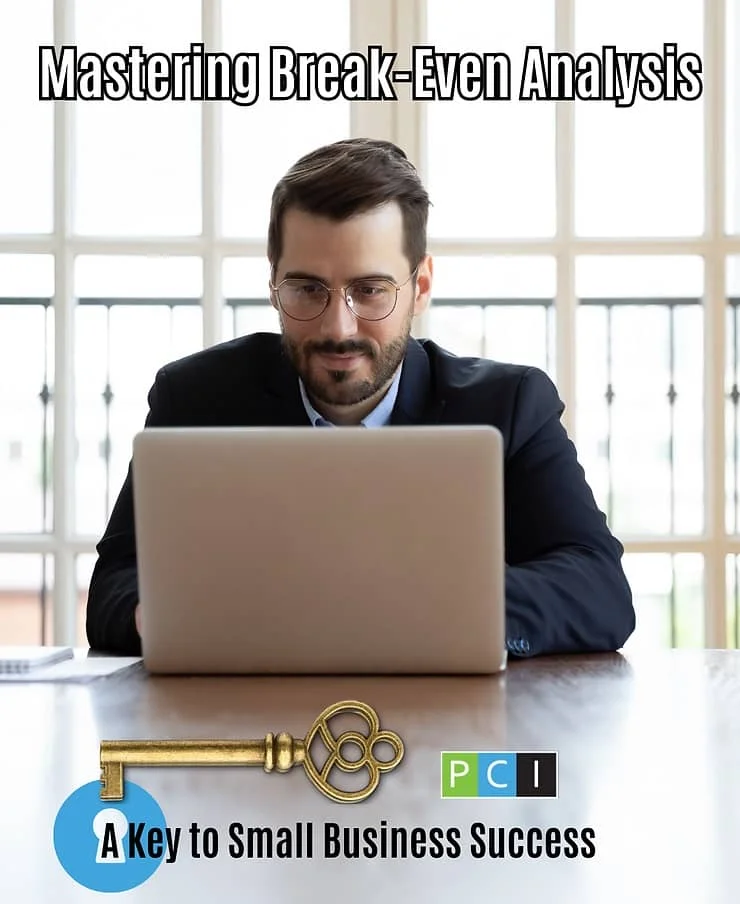Mastering Break-Even Analysis: A Key to Small Business Success
Running a small business involves many roles and responsibilities. Among them, understanding a financial concept called break-even analysis can make a big difference in your business’s success.
In simple terms, break-even analysis helps you figure out the point at which your sales cover all your costs, without making a profit or a loss.
It’s like finding the minimum number of sales you need to make to keep your business running.
Why does break-even analysis matters for small businesses? Here are some easy-to-follow examples to help you grasp its importance.
What is Break-Even Analysis?
Break-even analysis is a tool that shows you the minimum sales you need to make to cover your costs. It helps you understand how many products or services you have to sell before you start making a profit.
By knowing this point, you can set realistic sales goals, decide on pricing, and make better business decisions.
Why Does Mastering Break-Even Analysis Matter and how is it a key for Small Businesses Success?
Setting Realistic Sales Goals:
Break-even analysis helps you set achievable sales targets.
For example, let’s say you sell handmade soaps. By analyzing your costs and prices, you can figure out how many soaps you need to sell each month to cover your expenses.
This way, you can set goals that are challenging yet attainable.
Pricing Strategies:
Break-even analysis guides you in determining the right prices for your products or services. For instance, if you make and sell custom-made jewelry, knowing your break-even point helps you calculate how much you should charge per piece to cover all your costs and still make a profit.
Decision Making:
Break-even analysis helps you make smart business decisions. Imagine you’re thinking of expanding your online store and hiring additional staff. By analyzing your break-even point, you can estimate how much more you need to sell to cover the new expenses. This way, you can decide if the expansion is financially viable.
How to Perform a Break-Even Analysis:
Identify Fixed and Variable Costs:
Start by separating your costs into two categories: fixed costs and variable costs. Fixed costs, like rent and salaries, don’t change regardless of how much you sell. Variable costs, such as materials and packaging, depend on the number of products you make or sell.
Calculate Contribution Margin:
Contribution margin is the money you have left after subtracting the variable costs from your sales. Let’s say you sell t-shirts for $20 each, and it costs you $8 to make and deliver each t-shirt. Your contribution margin is $20 – $8 = $12 per t-shirt.
Determine Break-Even Point:
Divide your fixed costs by the contribution margin to find your break-even point. For example, if your fixed costs are $1,000 per month and your contribution margin is $12 per t-shirt, you need to sell 1,000 / $12 = 83 t-shirts to cover all your costs and break even.
Evaluate Profitability:
Once you know your break-even point, you can see how changes in sales volume affect your profits. If you sell more than the break-even quantity, you’ll start making a profit. If you sell less, you’ll experience a loss. This knowledge helps you make informed decisions to improve profitability.
Mastering break-even analysis is a valuable skill for small business owners. By understanding this concept, you can set realistic sales goals, determine appropriate pricing, and make informed decisions about your business’s future.
Want to know more? https://en.wikipedia.org/wiki/Break-even_(economics)
Remember, break-even analysis helps you find the minimum number of sales needed to cover costs and reach the point where you start making a profit. Embrace this powerful tool and use it to drive your small business towards success.

This blog is meant for educational purposes only. Articles contain general information about accounting and tax matters and is not tax advice and should not be treated as such. Do not rely on information from this website as an alternative to seeking assistance from a certified tax professional. Perlinger Consulting partners with certified tax professionals to assist our clients.
